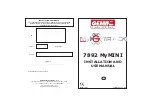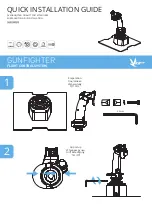
DS-100C Operating Manual
page C19
drops created by the test leads and to allow any switching transients to settle
before I
sc
is reached. This method allows a true short circuit current reading to
be made. The DS-Tracer allows 5 seconds for a curve to reach open circuit
voltage. At this point the circuitry discharges the capacitors through a resistive
load.
The complete cycle actually begins with a discharge of any residual voltage on
the capacitors. This discharge is followed by 7 seconds of pre-charge, 5 seconds
to take the curve, and finally another 5 seconds for discharge. The initial
discharge cycle is not normally needed. However, it ensures that the load
capacitors are ready to accept a pre-charge. The initial discharge, if needed,
may take up to 5 seconds.
The DS-Tracer uses an SCR to close the circuit between the PV system and the
load capacitors. SCRs are susceptible to false triggering (turn on) if the voltage
across them is increased too rapidly. The DS-Tracer DISCONNECT switch uses
two 1MΩ resistors (one each for the positive and negative leads) across the
disconnect switch contacts. These resistors allow the SCR to “see” the PV
system voltage before the DISCONNECT switch is closed; thereby preventing
the SCR from false triggering when the disconnect switch is closed. Under
normal operating conditions, this switch should always be the last switch closed
and the first switch opened when making PV system connections.
Note: In an emergency situation, it is recommended that the PV system switch
be opened first. The DS-100C disconnect switch is not rated to break
significant current at high voltage.
Some PV systems are sensitive to how quickly an I-V
curve is taken. The speed of a curve is most easily
expressed in volts per second by taking the PV short
circuit current in Amps (I
sc
) and dividing it by the DS-
Tracer load capacitance in Farads. Refer to
!
Содержание DS-100c
Страница 8: ......
















































